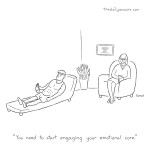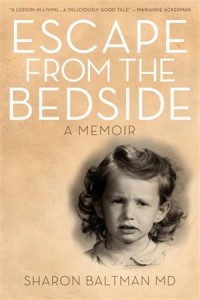The experiential feeling of shame is defined as a painful emotion caused by feeling like you have done something wrong or disgraceful. Shame is a popular trope and is associated with the concept of “Jewish guilt.” However, on the ground and in my practice with tweens, adolescents and adult women, shame carries with it strong painful emotions and regret(s). Shame is a common reaction to anxiety, depression and mental and emotional stress.
For the therapeutic clients who work with me, shame is expressed as all-consuming. In the context of emotional and mental stresses that are relational or situational, common expressions of shame arise of feeling broken, defective and disconnected. My general aim is to acknowledge the power of shame and their particular relationship to it by also normalizing the emotion and experiences with it. As a therapist, I use various creative-, expressive-, psychosocial-, embodied-, feminist-, narrative- and mindfulness-based psychotherapies to work a way inside, through and outside of the burdens my clients are holding. For the purpose of this article, I will focus on mindfulness psychotherapy.
Experiences of anxiety, depression, grief, relationship and family struggles often result in individuals being programmed and aware of the value of, or favouring of, one part of their experience over another – for some, it is intellectual or cognitive abilities; others are guided by emotions; others by physical signals. More and more we are realizing the importance of recognizing and listening to all of our responses as a way to heal and grow. A mindful approach to psychotherapy helps you identify and integrate all of these parts of yourself. Brain science validates this notion and suggests that, by attending to your thought patterns, emotional reactions and sensory experiences, you can change patterns of thinking, feeling and moving in the world. Even complicated mental and emotional health experiences paired with the weight of shame can be tackled using mindfulness as a key component in therapy and applying it in day-to-day life.
Mindfulness practice offers hope for changing unwanted or destructive reactions, belief systems and behaviours that seem fixed or difficult to mobilize. For example, if you have a negative self-view, by noticing the story you tell yourself and considering it a pattern of thinking versus a truth, there is room to reevaluate and create a more accurate description of yourself. And, when you have a more accurate and accepting view of yourself, you are more likely to trust yourself and live more freely. This work is not easy and it is important to proceed gently and in the care of a trusted mental health professional.
I will share a short mindfulness practice that you can do at home. Mindfulness connects one’s mind to one’s body and one’s breath. I like carrying out this mindfulness exercise with my individual therapeutic clients and in group therapy because it serves as a reminder to connect to one’s body and to breathe through it. Through this mindfulness practice, that I call “body scan,” one can gain both emotional and physical clarity and start a naming and eventual cleansing of emotions that do not serve including shame.
Body scan
Find a place you can sit comfortably, quietly and undisturbed and set a gentle timer for five to 10 minutes. Be kind with yourself and start slowly, with five minutes. The more you practise, the easier a longer mindfulness practice will be.
During the body scan exercise, you will pay close attention to the physical sensations throughout your body. The goal is not to change or relax your body and mind, but instead to notice and become more aware of your body, your mind and your breath.
Begin by paying attention to the sensations in your feet. Notice any sensations such as warmth, coolness, pressure, pain or a breeze moving over your skin. Slowly move up your body – to your calves, thighs, pelvis, stomach, chest, back, shoulders, arms, hands, fingers, neck and, finally, your head. Spend some time on each of these body parts, just noticing the sensations. Remember to breathe as fully as you can, in through your mouth, exhaling through your nose. Your breaths are like gentle and ongoing waves.
After you travel your body, begin to move back down, through each part, until you reach your feet again. Remember to move slowly, and just pay attention, breathing and noticing.
Dr. Abby Wener Herlin holds a doctorate degree from the University of British Columbia. She is the founder of Threads Education and Counselling and works with tweens, adolescents and adults. She carries out themed social justice and creative arts and writing workshops for students, teachers and schools. She is available for therapeutic sessions and contemplative writing workshops. She can be reached at [email protected] or via threadseducation.com.



